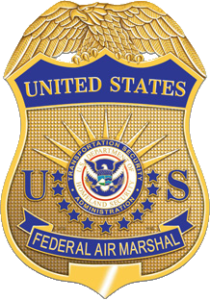 On the morning of September 11, 2001, nearly 3,000 people were killed in a series of coordinated terrorist attacks in New York, Pennsylvania, and Virginia. The attacks resulted in the creation of the Transportation Security Administration (TSA). The mission at TSA is to do everything in their power to make sure we get to our destination safely by keeping dangerous items off planes.
On the morning of September 11, 2001, nearly 3,000 people were killed in a series of coordinated terrorist attacks in New York, Pennsylvania, and Virginia. The attacks resulted in the creation of the Transportation Security Administration (TSA). The mission at TSA is to do everything in their power to make sure we get to our destination safely by keeping dangerous items off planes.
Security Measures Post-9/11
The Federal Air Marshal Service is part of the TSA and is the only federal law enforcement agency dedicated solely to protecting our nation’s aviation system. FAMs use a variety of tools and work with industry partners to detect, deter, and defeat any potential threat to aircraft, crew, and passengers. They play an important role in protecting travelers in mid-air and are essential to our national security.
Federal Air Marshals also perform investigative work and participate in multi-agency task forces and in land-based investigative assignments to proactively fight terrorism. Every day, TSA officers discover a wide range of strange, weird and dangerous items at security screening checkpoints.
In August of 2019, the TSA screened 17.2 million passengers and found 85 firearms in carry-on bags. Of the 85 firearms discovered, 77 were loaded and 33 had a round chambered. Propane and lighter fluid exist to be flammable so they’re prohibited on a plane – in carry-on or checked bags. Real, inert, replica or toy explosive devices aren’t allowed either.
There are nearly 950 advanced imaging technology machines at airports nationwide. The TSA screens 1.4 million checked items and 5.5 million carry-on items for explosives and other prohibited items every day.
As part of ongoing security screening operations by the TSA, FAMs use simulated weapons or other threats to test scanning locations as they pass through. To transport the many items used in these operations, the FAM uses a protective, rugged case.
Custom Solutions for Federal Air Marshals Service
H. Loeb was contracted to design and fabricate the foam packaging inserts for the cases used in this FAM program. H. Loeb was given empty Pelican type cases and an assortment of different shaped threat items to work with. Each simulated weapon or inert threat required its own cavity or compartment in the case. H. Loeb used a CNC Laser cutting process to cut the custom cavity shapes based on the profiles of the items after optimizing the layout.
The type of protective foam for the custom foam inserts was chosen based on the weight and fragility level of the items in each layer of the case. A polyethylene foam was chosen for its lightweight and support properties. Each “weapon” cavity was labeled and the layout of the case was organized by “terrorist scenario” for the FAM. The simulated weapons included knives, guns, computers, clock and pipe bombs, and grenades.

